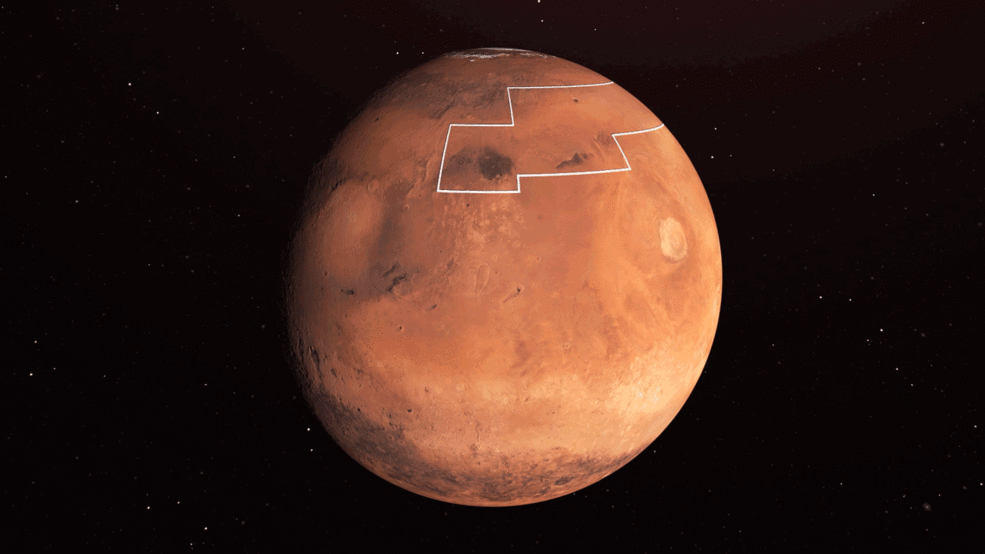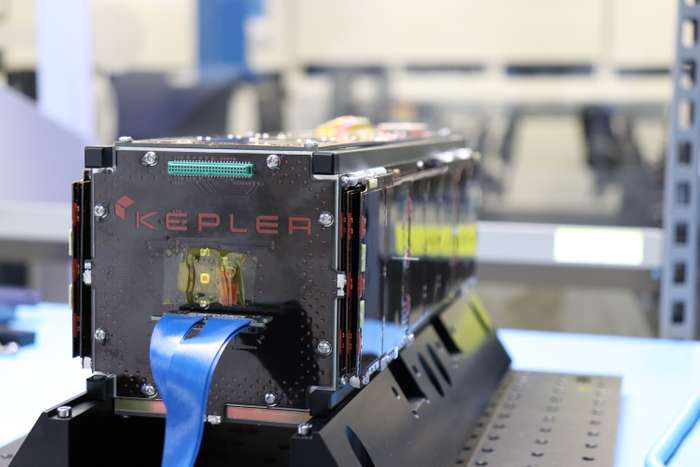New NASA map reveals water deposits only 2.5 centimeters under Mars topsoil —Potential SpaceX Starship landing site!
December 12, 2019 • Evelyn J. Arevalo

SpaceX ultimate goal is to build a sustainable city on Mars by the year 2050, a new map revealed by NASA can aid in the selection of a landing site for Starship. A location where water ice is abundant will be vital thing to consider for any potential landing site because future human missions to Mars will depend on utilizing what's available on the planet for survival, in the space industry this is called, In-situ resource utilization. In a paper recently published in Geophysical Research Letters, NASA revealed a new map of Mars where water ice is believed to be only about 2.5 centimeters below the topsoil's surface. Which is great because 2.5 centimeters can easily be digged by using a shovel. The paper's lead author, Sylvain Piqueux, of NASA's Jet Propulsion Laboratory in Pasadena, California said:
"You wouldn't need a backhoe to dig up this ice. You could use a shovel. [...] We're continuing to collect data on buried ice on Mars, zeroing in on the best places for astronauts to land."
Water in it's liquid state cannot last on Mars because air is thin, the surface has very little air pressure so it evaporates solid water into gas water vapor when exposed to the planet's atmosphere. Martian water ice is found underground throughout the planet's mid-latitudes. The data used in the paper are from NASA's Phoenix lander, which has studied the regions near the poles, by scrapping up the ice, and NASA's Mars Reconnaissance Orbiter (MRO) along with and the Thermal Emission Imaging System (THEMIS) camera on Mars Odyssey, that locates water ice that could potentially be easily accessible for future astronauts.

Source: NASA/JPL-Caltech/ASU
The multi-color map above shows underground water ice on Mars. The outlined box represents the ideal region where astronauts can dig up water ice easily on the Martian topsoil. On the map, the cool color hues, like blue and purple represent water that is closer to the surface; Warm colors, like red, orange and yellow represent water ice that's further below the soil. The black zones indicate potentially hazardous areas where a spacecraft could quickly sink into the Red Planet's soil. A possible landing location could be a region called Arcadia Planitia located in Mars' northern hemisphere. In that location, the map shows lots of blue and purple hues, which represents water ice that is less than 1 foot, about 30 centimeters below the surface, and the warmer hues are over two feet deep.

The first brave astronaut crew would be tasked with setting up what is needed for survival on Mars. One of the first things they would be challenged to do is, set up green house gardens for food consumption and setting up a propellant production plant to refuel to return home towards Earth one day. Both of these tasks will require large amounts of water.

SpaceX's Starship craft is powered by Raptor engines, a new type of rocket engine powered by a combination of (sub-cooled) cryogenic liquid methane and cryogenic liquid oxygen, in a full flow staged combustion cycle. This kind of rocket engine will enable astronauts to set up refueling stations on Mars. Starship fuel could be made by using the Sabatier process, they could take subsurface water ice and carbon dioxide from the planets atmosphere to synthesize methane. SpaceX is already developing high efficiency carbon capture system to capture carbon to utilize in fuel production. Future Martians could use electrolysis to split water into oxygen and hydrogen, and use the Sabatier process to transform carbon dioxide and hydrogen into water and methane. The Sabatier process involves the reaction of hydrogen with carbon dioxide at very high temperatures of about 300–400 °C and pressures in the presence of a nickel catalyst to produce methane and water. All of this process would be powered by solar energy.
Finding water and resources on Mars is vital for SpaceX's Starship spacecraft, to successfully build a sustainable city and become a space-faring civilization. This new NASA map will guide future adventurers to easily locate water.
Adventure Awaits!








